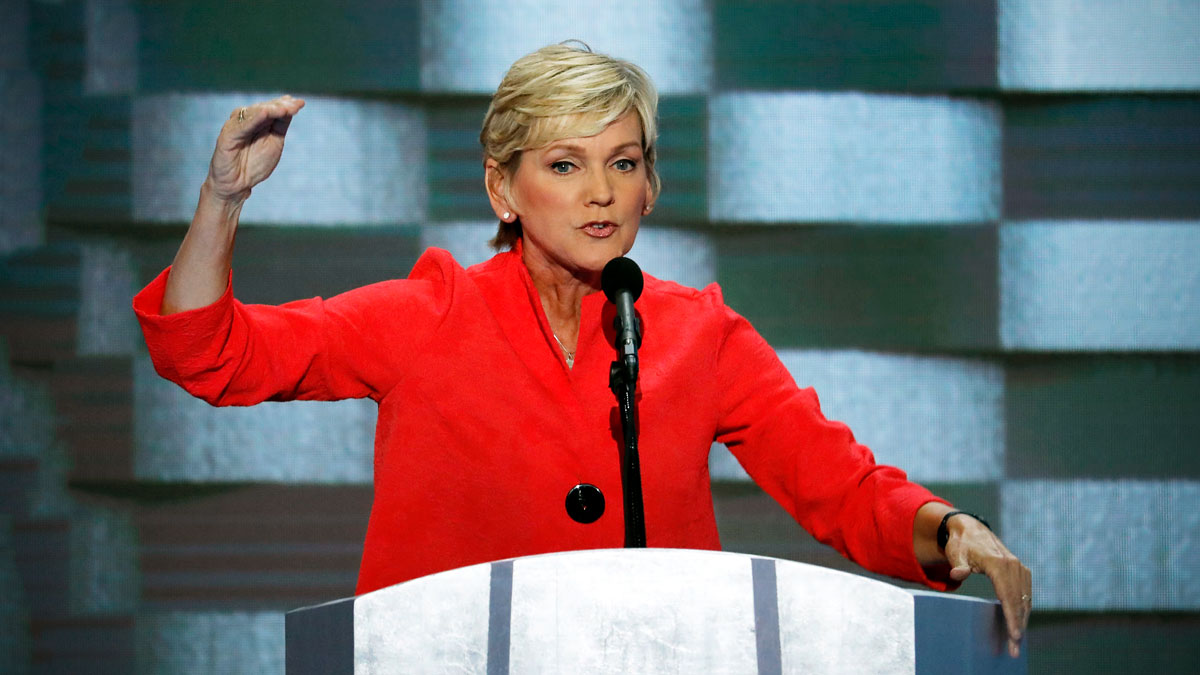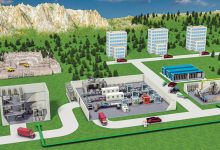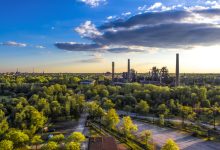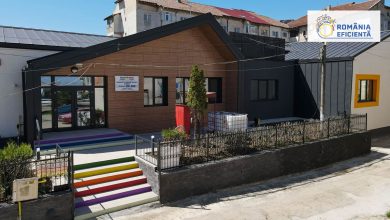U.S. LIHEAP: Lowering Electricity Bills and Creating Clean Energy Jobs
The U.S. Department of Energy (DOE), in collaboration with the U.S. Department of Health & Human Services (HHS), announced the five states and Washington, D.C. that will support the pilot of the Community Solar Subscription Platform to connect families to solar energy and lower electricity bills through the Low-Income Home Energy Assistance Program (LIHEAP) and other low-income assistance programs.
The Biden-Harris Administration, through the U.S. Department of Energy, launched new initiatives to connect families to more reliable clean energy, lower electricity bills, and create good-paying jobs in the domestic solar industry. DOE also announced USD 10 million from President Biden’s Bipartisan Infrastructure Law to jump-start solar energy careers in underserved communities. The announcements support President Biden’s goal to reach a carbon-free electricity sector by 2035 while creating good-paying jobs across the country.
“Every American community, especially those that face disproportionately higher energy burdens, deserves the economic and health benefits that come with increased access to affordable clean energy,” said U.S. Secretary of Energy Jennifer M. Granholm. “This is why DOE is working across the federal government to open up community solar that will rapidly lower electricity bills for households that need it most and create good paying jobs in every pocket of America.”
Connecting communities to solar power and lowering electricity bills
HHS’s LIHEAP program keeps families safe by assisting eligible households with their heating and cooling energy costs, bill payment assistance, energy crisis assistance, weatherization, and energy-related home repairs. Transitioning to solar energy can help households across the country save money on their electricity bills, but many Americans have been unable to access these benefits. Community solar, which allows multiple customers to benefit from a shared solar energy system, provides a solution for individuals who cannot get rooftop solar panels. DOE’s community solar target is to power 5 million homes and provide 20% savings on a subscriber’s energy bills, up from 10% on average today.
The Community Solar Subscription Platform is designed to connect community solar projects with verified cost savings to households participating in government-run assistance programs like LIHEAP. The initial pilot will be supported by the states of Colorado, Illinois, New Jersey, New Mexico, New York, and Washington, D.C. These states will provide feedback, coordination, and data to test the operability, security, and performance of the platform. DOE has prioritized working with states that have existing programs to support low-income community solar development so that, if successful, participants will see significant electricity bill savings, including:
- 20% in Illinois, New Jersey, New York, and New Mexico
- 50% in Washington, D.C., and Colorado
DOE estimates that this could lead to electric bill savings of up to:
- USD 240 million in Colorado
- USD 300 million in Illinois
- USD 175 million in New Jersey
- USD 30 million in New Mexico
- 400 million in New York
- USD 40 million in Washington, D.C.
“I’m proud to join the White House, Department of Energy, Department of Housing and Urban Development, and Department of Health and Human Services in support of the community solar subscription platform. This innovative and exciting project helps lower electricity bills, save people money through expanded and streamlined access to affordable community solar subscriptions. This initiative will save Coloradans millions on electricity bills every year, reducing energy burdens across the state. That’s money better spent on groceries, on rent, or on taking the family out for fun. We are so thrilled to support this effort to save people money and accelerate Colorado’s pathway to 100% renewable energy,” Colorado Governor Jared Polis said.
“Community solar programs are essential to the expansion of renewable energy across the state of Illinois and the entire nation. That’s why I’m proud to continue our state’s nation-leading work to grow the clean energy economy by adopting The National Community Solar Partnership’s LIHEAP Community Solar Subscription Platform. By supporting low-income communities who want to participate in this program, we can increase energy efficiency in the long term and provide impactful access to cost-saving solar energy for the households in our state that need it most. In Illinois, we know an equity-centric approach that puts consumers and climate first delivers results that will leave our children a safer world live in,” Illinois Governor JB Pritzker added.
“Through our participation in the Community Solar Subscription Platform project, New Jersey is helping families across the state reduce energy costs. As an advisor to the Department of Energy on the design and function of the platform, New Jersey will have the opportunity to ensure that the platform eliminates barriers to critical clean energy resources and benefits residents most vulnerable to the impacts of the climate crisis. It’s crucial collaborations like these that will help us provide every community member with ample opportunities to reap the benefits of a clean energy future,” New Jersey Governor Phil Murphy noted.
“New Mexico is excited to participate in this pilot program, which builds on my administration’s efforts to make solar available to everyone. Our LIHEAP – eligible customers will see savings of 30% – that’s a gamechanger for New Mexico families,” New Mexico Governor Michelle Lujan Grisham mentioned.
“New York is the leading community solar market in the U.S. and has set an example for how states around the country can cost-effectively bring clean, affordable solar energy to millions of families who are facing the burden of rising energy costs. We are proud to work with President Biden, his administration, and the many partners through this collaboration to ensure our most underserved customers have access to this innovative new resource,” New York Governor Kathy Hochul said.
“When we as a nation work together toward our climate goals, we have the ability to move collectively toward a better, greener, and more sustainable future. We know that the implementation of community solar is critical to creating a future that promotes healthy, renewable, and sustainable living, and we are pleased to join the effort. By working with property owners, especially of multifamily affordable homes, and local businesses, we can ensure that our future is a clean and resilient one. We are proud of the work we are doing here in DC and look forward to joining in this nationwide effort,” Washington, D.C., Mayor Muriel Bowser concluded.
DOE’s National Community Solar Partnership, HHS, National Renewable Energy Laboratory, Lawrence Berkeley National Laboratory, National Energy Assistance Directors Association, and the National Association of State Energy Officials are collaborating on the Community Solar Subscription Platform.
DOE also issued a Request for Information to obtain feedback on the structure of the platform from community-based organizations, community solar subscription managers and developers, state and local governments, researchers, LIHEAP implementation organizations, and others.
Creating a strong solar workforce
While the solar industry is already more diverse than national averages, the Biden-Harris Administration has invested USD 10 million through the Bipartisan Infrastructure Law to ensure that the future solar workforce is equitable, inclusive, and benefits people in underserved communities who live in and around the projects. According to estimates in DOE’s Solar Futures Study, the industry will need to create hundreds of thousands of good-quality jobs to achieve decarbonization goals. These jobs should be accessible to workers from all backgrounds, provide competitive wages and benefits, and offer opportunities for union membership.
DOE’s Advancing Equity through Workforce Partnerships program will fund projects that support new workforce programs that bring together employers, training providers, and labor unions to support pathways to the solar industry to recruit, train, and retain an inclusive workforce. These programs will be demand-driven, worker-centric, and sector-based, and will utilize established workforce programs and resources, be sustainable and replicable, and prioritize energy justice. By assessing the regional labor market and the current and future needs of employers, multi-stakeholder project teams can help ensure optimal alignment between different training programs and the actual needs of industry.
Launching Community Solar Prize Competition
To encourage the development of equitable community solar projects and programs, DOE is also launching the Sunny Awards for Equitable Community Solar, a new awards program that will recognize best practices in community solar that increase equitable access and ensure benefits go to subscribers and their communities. Up to five finalists can win a Sunny Award and prizes of USD 10,000 per team.







